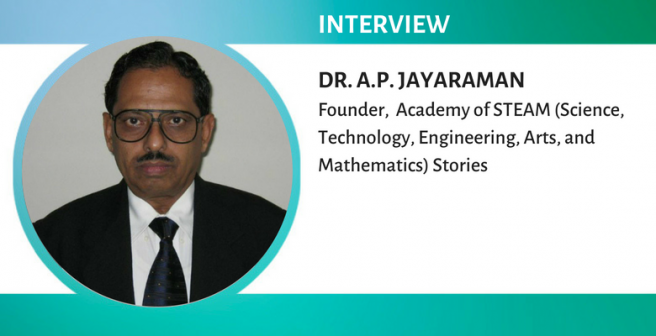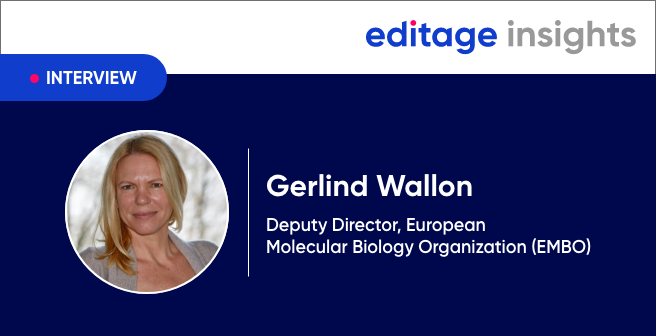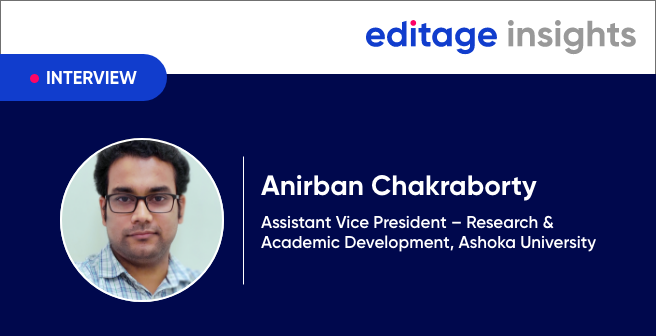There are warm human stories behind every scientific concept, principle, law, and practice-Dr. A.P. Jayaraman

Dr. A.P. Jayaraman is a nuclear scientist-engineer who uses his passion for science to drive path-breaking science communication initiatives in India. During his career as a scientist, Dr. Jayaraman noticed the gap between science and the public and decided to propagate the cause of making science more engaging for the non-scientific community. He founded the Academy for the Advancement of STEAM (Science, Technology, Engineering, Arts and Mathematics) stories, which focuses on creating awareness of the concept of using stories to communicate scientific concepts. In this conversation, Dr. Jayaraman shares his views on science communication. Science abounds in stories, Dr. Jayaraman says, and it’s up to us to make the most of them. He also talks about the need to reform science education in India as well as the future of science communication using alternative communication formats.
About Dr. Jayaraman: Dr. Jayaraman holds a PhD in science, PGDMM in management, and a diploma in mechanical and electrical engineering. Following academic training as nuclear scientist-engineer, he shifted his focus to re-engineering science education, a project that he is heavily invested in and passionate about. Over the span of a successful academic career, he has received several accolades including the International Copernicus Award for Science Popularization and numerous national and state awards for his efforts to propagate science communication in India. Dr. Jayaraman was until recently the Academic Dean of and a Teaching Professor in Technology management at the Sadanam Institute of Management Studies, Palakkad, Kerala. He is also the Vice Chairman of the National Centre for Science Communicators in Mumbai, India, where he created a new genre of Creative Science Literature for Children and introduced science stories in international storytelling conferences. Over the years, Dr. Jayaraman has participated in several workshops and training events for teachers, school children, fellow scientists, and policymakers in India. He has authored 20 science books and over 5,000 journal articles.
What led you to set up the Academy for the Advancement of STEAM Stories? Could you tell us more about it?
I attend several conferences, seminars, and workshops where I have a lot of discussions with scientists and science educators. During these events and interactions I realized that science needs to be broken down in a way that it can be easily assimilated by laypeople. This led to the concept of an academy for the sustainable advancement of scistories (which refers to stories about science).
In India, there have been isolated efforts to combine storytelling and science. For example, there is Professor Sivadas who has written over 180 scistory books in Malayalam for children and has been the creative editor of Eureka for several years. However, the issue is that even though there are similar initiatives in other Indian languages, these stories need translation or transliteration to help increase their visibility and uptake. I also realized that planning, organizing, executing, and monitoring the design, production distribution and exchange of scistories is a large project.
A problem facing science education at all levels today is narrative deficiency. Science, as taught in classrooms, is barren and sterile. It is a burden on memory. Science is what scientists do. There are warm human stories behind every scientific concept, principle, law and practice. The history of science is a veritable El Dorado of stories. The Scientific method of knowing and doing things in a specific way needs to be developed as a way of thinking and living The scientific method they follow and the refinements they make need to be noted. Take the periodic table for example; every element would have no fewer than ten stories;I feel thatthe periodic table itself contains about 1200 stories. Another problem is that scientists consider it infra dig to tell stories. Active scientists in the prime of their creative career are skeptical about the function of the story in science communication and are wary of being labeled “storytellers” by their peers.
The magnitude of these problems as well as the scope of the endeavor to bring laypeople closer to science led me to set up the Academy for the Advancement of STEAM stories (Science Technology, Engineering, Arts, and Mathematics). The academy brings academic rigour to scientific disciplines. The core team of the STEAM Academy consists of a university professor who also plays the role of editor, a nuclear scientist, a mechanical engineer, an electrical engineer, an astronomer-educator, a school principal with a background in mathematics, and a philosopher logician with an average experience of 30 STEM years. The philosopher logician is Professor Mark Nowacki, CEO of Logic Mills Learning Academy Singapore and he helps us ensure that pure Reason, Logic and Theory of Knowledge are blended into the STEAM stories we generate. This team, which has a healthy mix of people from different disciplines, networks with science education centres and research establishments in India in order to create events aimed at promoting scistories.
In the context of science communication in India, how can scientific information be made more interesting or engaging?
Currently, in many schools in India, a common way of teaching science or imparting science education at lower and higher levels is getting students to commit text book definitions to memory, writing down the derivative steps of equations several times and solving them with the given data, especially in mathematics and the physical sciences. In biological sciences, memorizing definitions, descriptions, and neat drawings that are highly faithful to prescribed textbooks are techniques that are commonly used by students to succeed academically.
Often, when I think of science, I think of hard water, which needs to be softened or made palatable by removing the hardness-causing minerals in it. Extending the same analogy to science, we need to make science softer by making it more accessible to people. Doing this will help educate the lay people about science and get them interested in it. Short scistories specifically designed for the classrooms and tailored to appeal to students could be used as a teaching aid. In fact, they could also be used to engage other stakeholders in the scholarly publishing industry.
Softening science does not mean that it needs to be trivialized. Of course, we cannot use histrionics in the narrative of a science story because that would eat into the scarce time academics have and dilute the core message. But you certainly can have a well prepared slide and two-minute story on the subject under discussion. Creating short, interesting, scientifically accurate stories will go a long way towards softening science. A collection of such stories could be made available to teachers, policymakers, lay people, and other academics through workshops, mass media, or social media. We also plan to build a network of retired scientists who we will approach for their own stories. The idea is to use this network to build an inventory of original Indian STEAM stories.
How has science communication in India evolved?
In India, science communication kicked off with popular science articles in print media and radio talks. A generation of science journalists emerged and largely comprised established reporters and science teachers in many Indian languages. Public engagement with science is fashionably high on the agenda of many stakeholders today. As the reach of scientific research has to be extended, alternative means like storytelling, street plays and other art forms are being included under the science communication umbrella. Peoples’ science movements emerged, thanks to concerned and aware citizen scientists. In the early days it was all general science tempered with the scientific world view. Eradication of superstitions was an entertaining and attractive topic to present using alternate forms of communication. As science literacy movements gained momentum, a more structured approach came to be followed in the spectrum of science news. Science communication steadily developed further with popular science journals and science columns in newspapers.
However, using alternative formats for science communication also needs a change in the mindset of the communicators. Alternative modes do not make the content less important or less scientific. Everything that talks about science needs scrutiny as does the competence of the communicator. If you are working on creating an alternative mode of sharing scientific findings or information, a safe approach would be to avoid finality and assertions. Also, hazard communication should be done with great care, e.g., when sharing information about a virus outbreak or about a phenomenon that could affect the masses, such as the endosulfan controversy or the Plachimada debate against Coca Cola.
Do you think there is need for a mindset change among editors and journals towards communicating science beyond the journal article?
I am inclined to hold the view that the hardline approach of certain highly visible journals and their editors needs to be softened. Every professional scientist is keen to communicate to a visible journal in the zeitgeist of publish or perish. Sir C.V. Raman’s angst for publication is classically well known. The dream is to see one’s labour of love in print in a prestigious peer reviewed reference journal and bask in the glory of that publication and the resultant citation index. There are fairly well defined rules drafted by editors’ guilds which authors faithfully follow to avoid their paper from being rejected.
In academic publishing, we also have the famous Ingelfinger rule which preserves the purity of research findings and ensures that it is uncontaminated by any shadow of reference in the mass media. Those who wanted to publish in the New England Journal of Medicine had no option but to keep media at arm’s length and shun away public events such as academic conferences. This is because under the Ingelfinger rule, liaising with the media persons is like performing publication harakiri. The ground reality is that researchers can’t stop at publishing their papers. They have to file in progress reports and lobby with funding agencies with a part or sample of their work. And the best way to increase outreach and demonstrate impact is to use alternative ways to communicate science in addition to journal publication, e.g., infographics, press releases, etc.
What is the future of science communication? What role do you think alternative ways of communicating science will play in the future?
Science is a massive organized activity. Huge investments have been made and there are high expectations from the returns on this investment. According to the All India People’s Science Network, 99% of scientists recorded in history are alive and active today.
Based on a post I read, In India, 4 people among every 10,000 are scientists. In China, this ratio is 18:10,000, while in Singapore and other advanced countries it is over 80:1,000. Given the sheer number of researchers, the scientific output is huge and we need to ensure that these findings are communicated to scientific and non-scientific community alike, to ensure that they influence positive outcomes for the betterment of society. Science communication will be of paramount importance here. When there are social issues involving science and technology, alternative ways to reach out to the people need to be devised. For example, Kerala Sastra Sahitya Parishad (KSSP), the voluntary organisation that is part of the people’s science movement in the south Indian state of Kerala, focused on popularizing science as well as ideating solutions for sustainability and development. They launched a series of products that helped the Indian rural population with energy efficient products that could be used in their daily lives.
The future of science communication is bright, given the increasing impact of science on society and the arrival of a post truth world. In the future, science communication will increasingly use alternative methods over and rise above the gold standard of publication in academic journals. Scistories will be a dominant phenomenon and will be a significant part of the narrative and discourse of learning and teaching.
Thank you, Dr. Jayaraman! It’s exciting to speculate a future where science popularization initiatives are a success.



